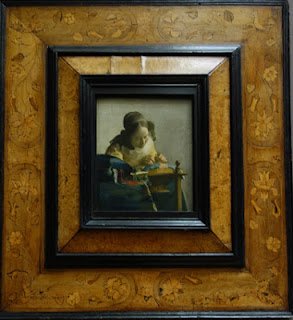Just returned home from two weeks in Europe and thought I would write a bit on the pieces that struck my fancy. The big one that tops the list, "Sewing the Sail" by Joaquin Sorolla y Bastida, was by far my favorite.
Sorolla’s painting was extremely large, about 10ft. x 7.5ft. I loved
the sense of light but also the liveliness of the people. This painting was housed in the
Ca' Pesaro Museum in Venice. There were a number of paintings I enjoyed there and Italian painters I discovered and hope to learn more about. A few are shown below.
"Abandoned" by Luigi Nono, above, painted in 1903 was one of them. Tenderly painted it really had an emotional impact; and this is after being harassed every time you turn around with the wide eyed, sad mother of however many children, begging. There was a certain look they all have down pat, whether on the trains throughout Italy, the metro or the streets of Rome.
Another was "Toothed Prows" by Guido Marussig, 1918. Very simple, very Venice, but effective.
I will end with Umberto Moggioli, "The Artist's House", from 1918. One thing of note, there were a number of paintings by Moggioli, and the museum mounted them in chronological order, which made it nice for the viewer to watch the artist grow and change over the years. This was the latest of those on exhibit.
There were other paintings worth noting, such as the "
Rabbi of Vitebsk" by Marc Chagall, "Nude at the Mirror" by Pierre Bonnard, Anders Zorn, "
Stream" and Fernand Khnopff "Portrait of Miss De Rothmaler." A beautiful museum in and of itself, the works are definitely worth a visit if you find yourself in Venice.























